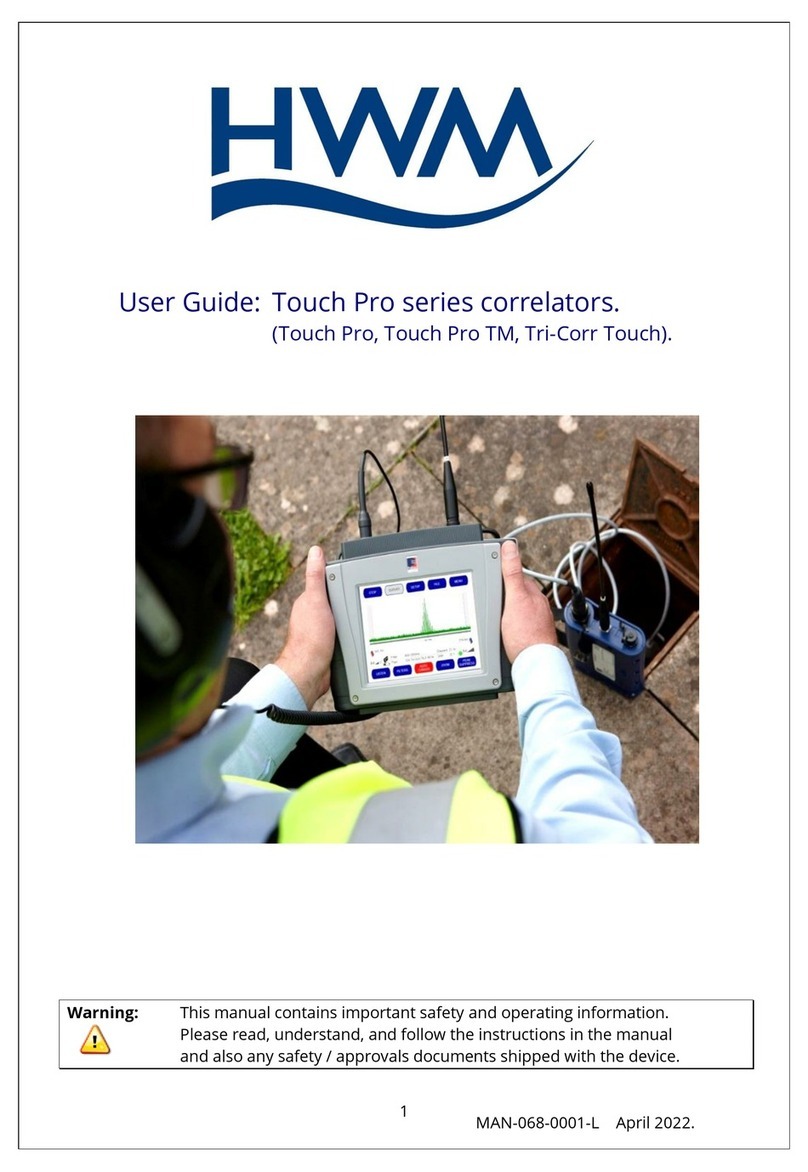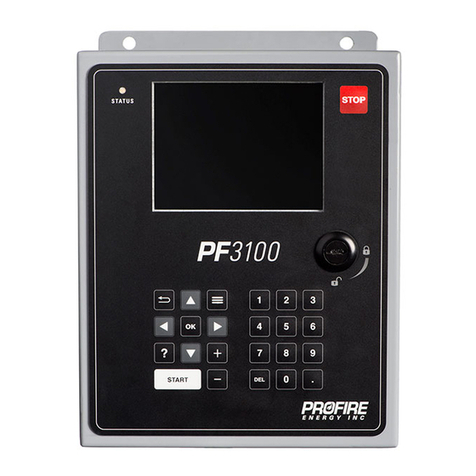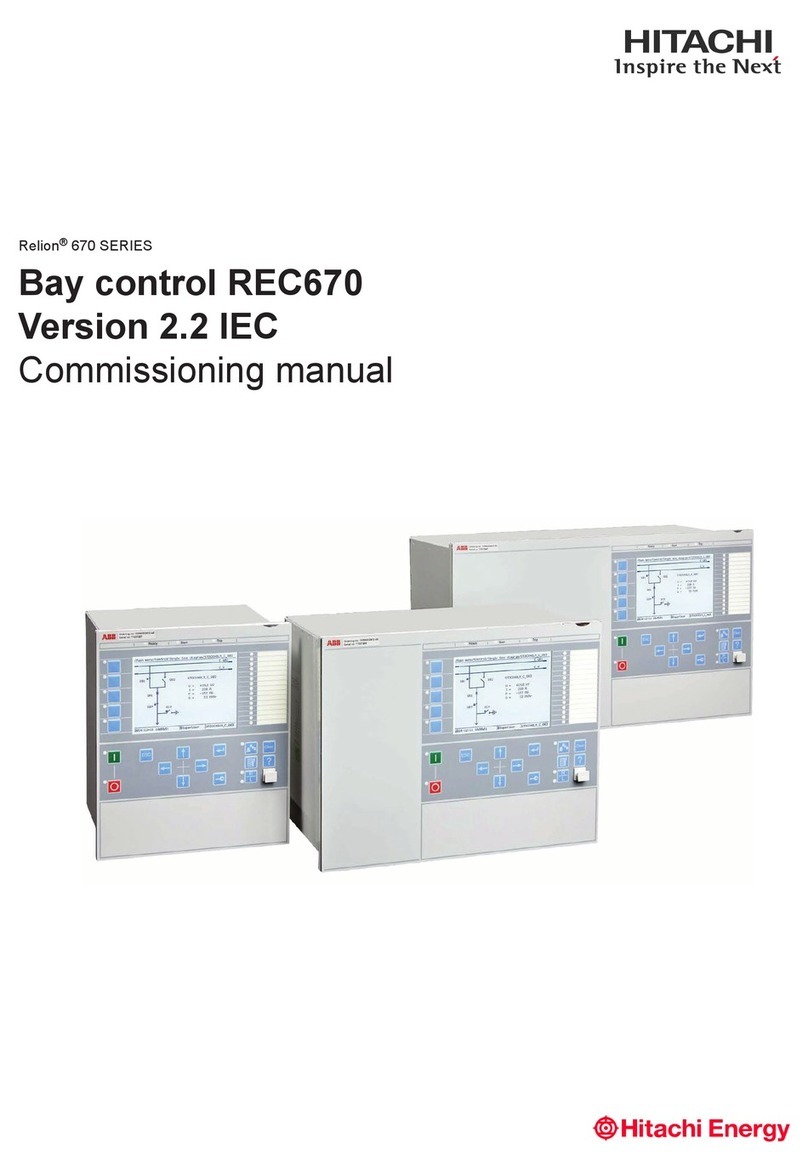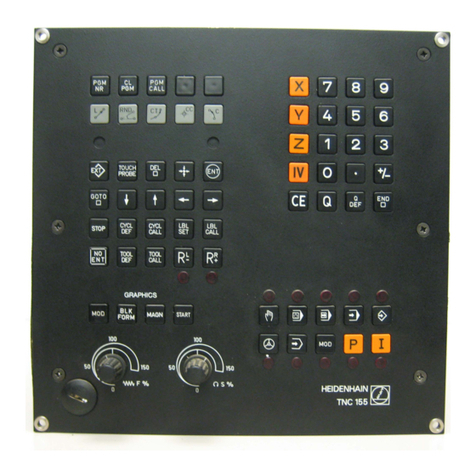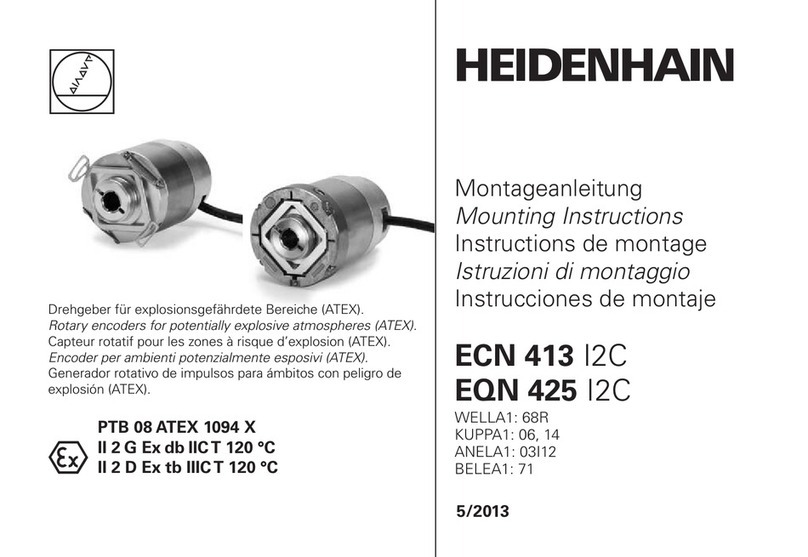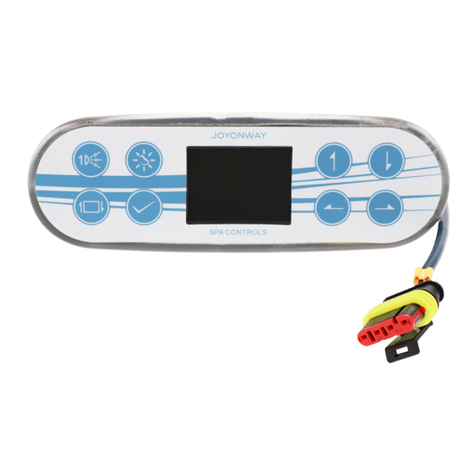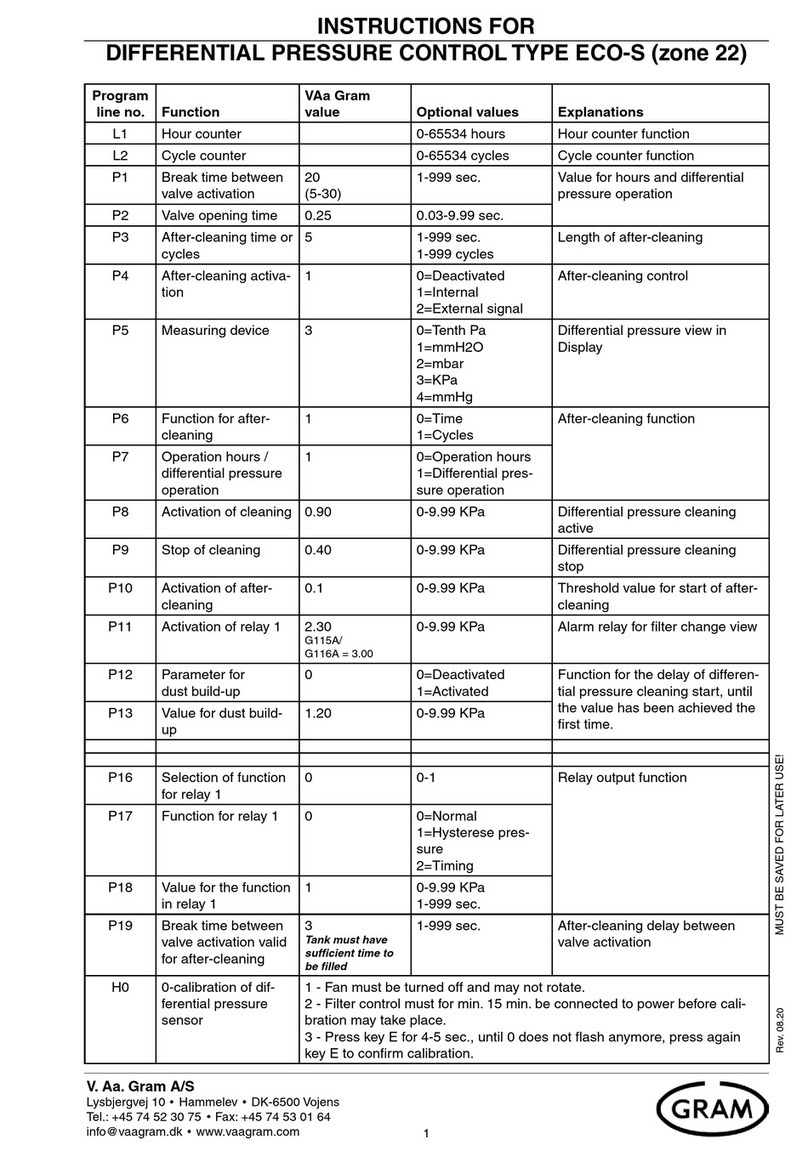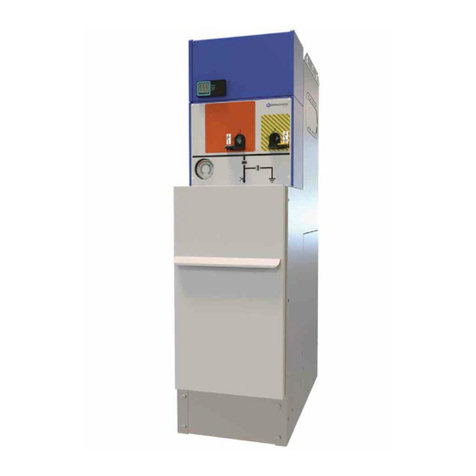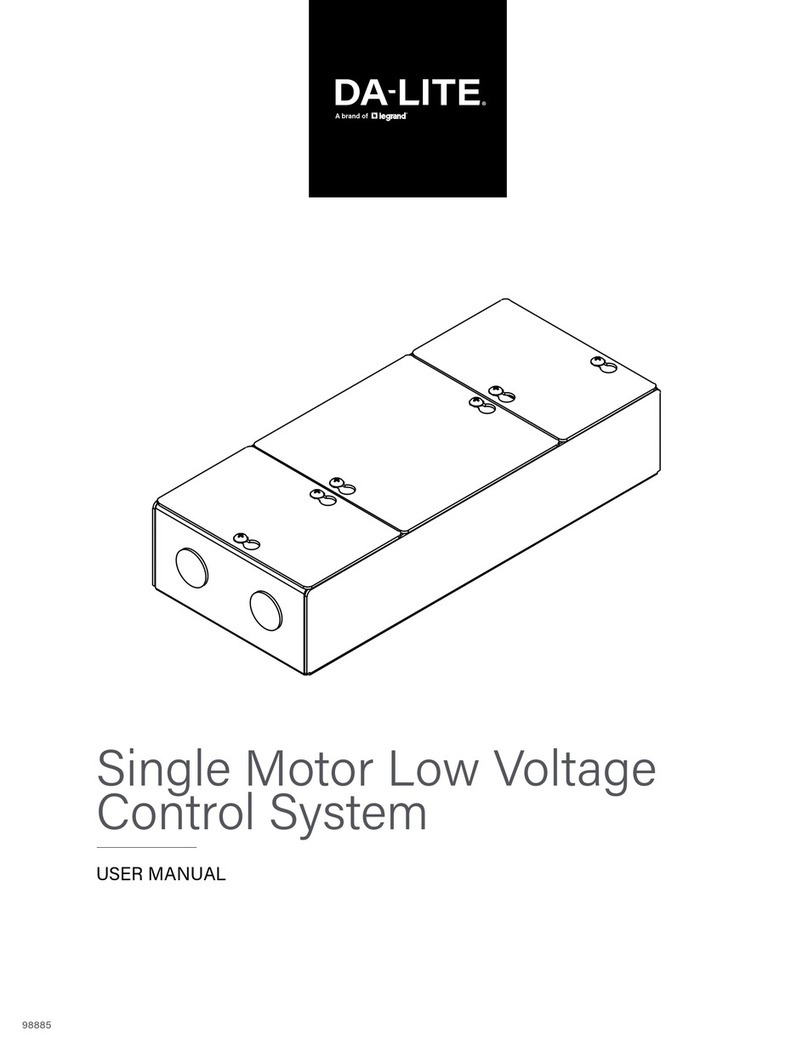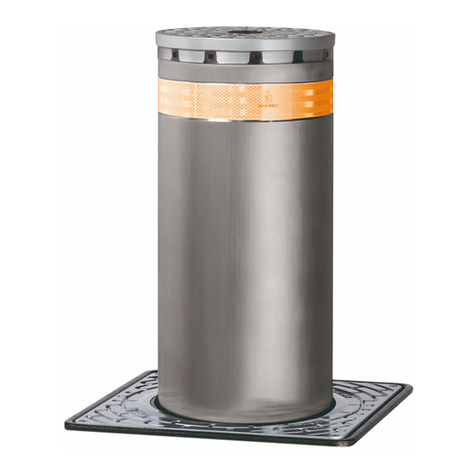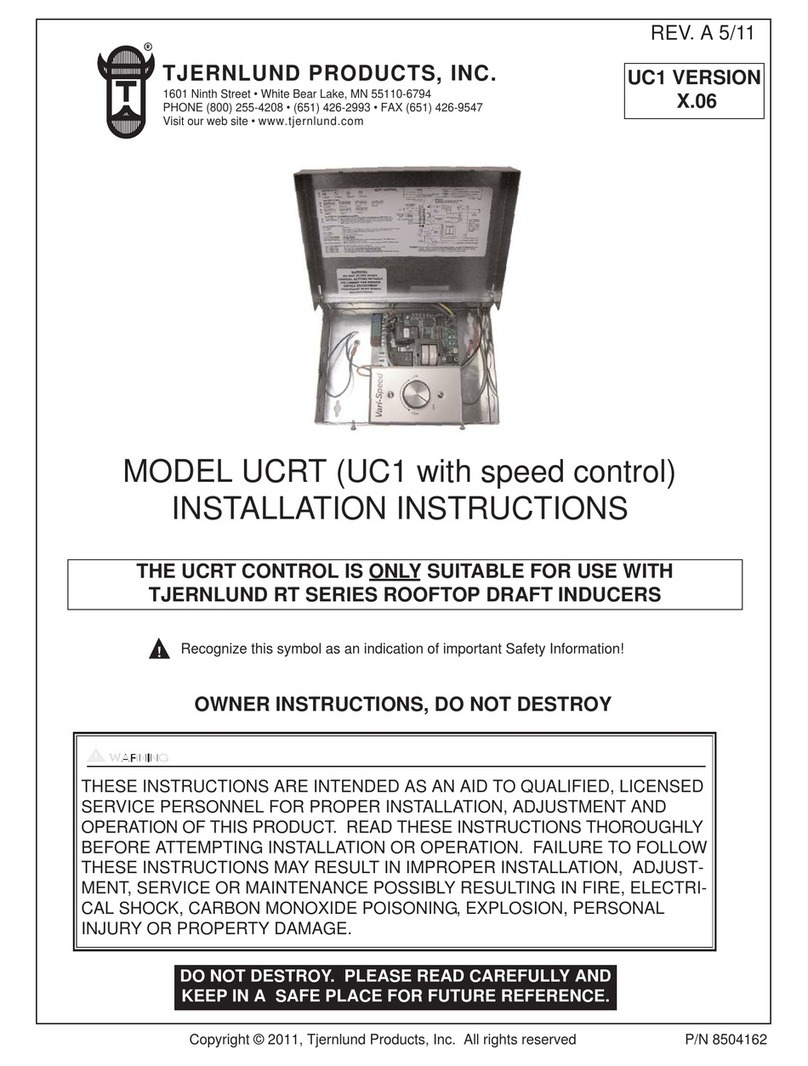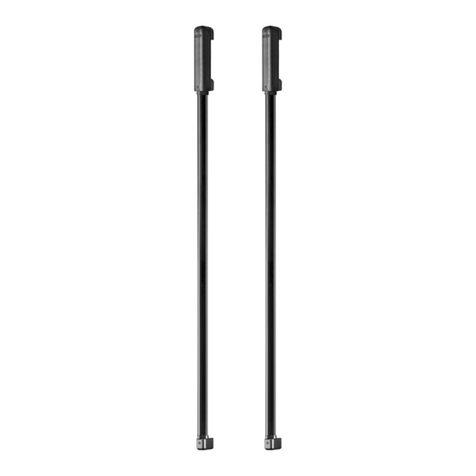Electrex X3M User manual

1
X3M
Energy Data Manager
User Manual
Version8 November 2005
The document can be modified without prior information.

2
Index
INTRODUCTION .............................................................................................................................. 6
1.1 COPYRIGHT ........................................................................................................................ 6
1.2 WARRANTY ......................................................................................................................... 6
1.3 RETURN AND REPAIR FORMALITIES................................................................................. 6
1.3.1 RE-SHIPPING OF REPAIRED PRODUCT..................................................................... 6
1.3.2 Return Material Authorization (RMA form).................................................................... 7
2Safety......................................................................................................................................... 8
2.1 Operator safety .................................................................................................................... 8
3Mounting .................................................................................................................................... 9
3.1 Dimensions (mm).................................................................................................................9
3.2 Fixing and blocking .............................................................................................................. 9
4Wiring Diagrams ...................................................................................................................... 10
4.1 Power Supply..................................................................................................................... 10
4.2 Measurement Connections ................................................................................................ 10
4.2.1 Voltage connection...................................................................................................... 10
4.2.2 Current connection ...................................................................................................... 10
4.2.3 4W Star Connection (4 wires) ..................................................................................... 11
4.2.4 3W Delta Connection (3 wires).................................................................................... 12
4.2.4.1 L1 L3 Phase Connection with 2 CTs.................................................................. 12
4.2.4.2 L1 L2 Phase Connection with 2 CTs.................................................................. 13
4.2.5 2 Wire Connection (single phase) ............................................................................... 13
4.2.6 2 Wire Connection (double phase).............................................................................. 14
4.3 Output Connection............................................................................................................. 14
4.4 Connecting Optional Components ..................................................................................... 15
4.4.1 RS485 Option.............................................................................................................. 15
4.4.2 RS232 Option.............................................................................................................. 16
4.4.3 Double 4-20 mA analogic Output Option..................................................................... 16
5Instrument Use ........................................................................................................................ 17
5.1.1 Set up sequence ......................................................................................................... 18
5.1.2 Configuration Procedure ............................................................................................. 19
5.1.2.1 Electrical system configuration........................................................................... 19
5.1.2.2 Communication Parameters Configuration ........................................................ 21
5.1.2.3 Output Configuration .......................................................................................... 21
5.1.2.4 Pulse characteristics configuration..................................................................... 22
5.1.2.4.1 Pulse output set up with Modbus registers..................................................................... 22
5.1.2.5 Alarm Configuration ........................................................................................... 23
5.1.2.5.1 Alarm set up with Modbus registers. .............................................................................. 24
5.1.2.6 Analog 4-20 mA Outputs Configuration. ............................................................ 25
5.1.2.6.1 Analog output set up with Modbus registers................................................................... 26
5.1.2.6.2 4-20 mA output configuration of the average AVG values ............................................. 26
5.1.2.7 Clock calendar configuration (for X3M-D only) .................................................. 27
5.1.2.7.1 Clock set up with Modbus registers................................................................................ 28
5.1.2.7.2 Time zones ..................................................................................................................... 29
5.1.3 Reset Procedure ......................................................................................................... 33
5.2 Readings............................................................................................................................ 34
5.2.1 Readings selection keys.............................................................................................. 34
5.2.1.1 Voltage and Frequency Readings...................................................................... 34
5.2.1.1.1 3P 4 W Configuration...................................................................................................... 34
5.2.1.1.2 3P 3 W Configuration...................................................................................................... 35
5.2.1.1.3 3P-b 4W Configuration ................................................................................................... 35
5.2.1.1.4 3P-b 3W Configuration ................................................................................................... 35
5.2.1.1.5 1P 2W Configuration....................................................................................................... 35
5.2.1.1.6 2P 2W Configuration....................................................................................................... 35
5.2.1.2 Current readings ................................................................................................ 36

3
5.2.1.2.1 3P 4W Configuration....................................................................................................... 36
5.2.1.2.2 3P 3W Configuration....................................................................................................... 36
5.2.1.2.3 3P-b 4W Configuration ................................................................................................... 36
5.2.1.2.4 3P-b 3W Configuration ................................................................................................... 36
5.2.1.2.5 1P 2W and 2P 2W Configuration.................................................................................... 36
5.2.1.3 Powers ............................................................................................................... 37
5.2.1.3.1 3P 4W Configuration....................................................................................................... 37
5.2.1.3.2 3P 4W only Import Configuration.................................................................................... 37
5.2.1.3.3 3P 3W / 3P-b 3W / 2P 2W Configuration........................................................................ 38
5.2.1.3.4 3P-b 4W Configuration ................................................................................................... 38
5.2.1.3.5 1P 2W Configuration....................................................................................................... 38
5.2.1.4 P.F. Visualization ............................................................................................... 39
5.2.1.4.1 3P 4W Configuration....................................................................................................... 39
5.2.1.4.2 3Pb 4W Configuration..................................................................................................... 39
5.2.1.4.3 3P 3W e 3Pb 3W Configuration...................................................................................... 39
5.2.1.4.4 1P 2W e 2P 2W Configuration........................................................................................ 39
5.2.1.5 Energy................................................................................................................ 40
5.2.1.6 Only Import Energy Display ............................................................................... 40
5.2.1.7 Tariff Energies and Tariff Maximum Demand..................................................... 41
5.2.1.8 Calendar Clock and Life Time........................................................................... 41
6Instrument Description............................................................................................................. 42
6.1 Introduction ........................................................................................................................ 42
6.2 Simplicity and versatility..................................................................................................... 43
6.3 Total harmonic distortion Measurement (THD).................................................................. 43
6.4 Energy Measurement......................................................................................................... 43
6.5 Storage .............................................................................................................................. 43
6.6 Calibration Led................................................................................................................... 44
6.7 Digital Outputs ................................................................................................................... 44
6.8 Pulse Output ...................................................................................................................... 44
6.9 Alarms................................................................................................................................ 44
6.10 Communication............................................................................................................... 44
6.11 Clock / Calendar ............................................................................................................. 45
6.11.1 Clock Format............................................................................................................ 45
6.12 Memory........................................................................................................................... 45
6.12.1 Dimensions .............................................................................................................. 45
6.12.2 Memory Read/Write. ................................................................................................ 45
6.12.3 File Structure............................................................................................................ 45
6.12.4 Record Structure...................................................................................................... 46
6.13 Average and peak Energy .............................................................................................. 46
6.14 Tariff Time Bands ........................................................................................................... 46
7System Architecture................................................................................................................. 47
7.1 General Features............................................................................................................... 47
7.1.1 X3M .............................................................................................................................47
7.1.2 Options ........................................................................................................................ 48
7.1.2.1 RS485 Port......................................................................................................... 48
7.1.2.2 RS232 Port......................................................................................................... 48
7.1.2.3 2 x 4-20 mA Analog Output................................................................................ 48
8Parameters and formulas ........................................................................................................ 49
8.1 3P 4W Three phase with 4 wire neutral ............................................................................ 49
8.1.1 Available Reading: ...................................................................................................... 49
8.1.2 Measurement Formulas: ............................................................................................. 51
8.2 3P 3W Three phase without neutral................................................................................... 53
8.2.1 Available Reading: ...................................................................................................... 53
8.2.2 Measurement Formulas: ............................................................................................. 55
8.3 3P-b 4W Balanced Three phase with neutral ................................................................... 57
8.3.1 Available Reading: ...................................................................................................... 57
8.3.2 Measurements Formulas:............................................................................................ 59

4
8.4 3P-b 3W Balanced three Phase without neutral 3 wires.................................................. 60
8.4.1 Available Reading: ...................................................................................................... 60
8.4.2 Measurement Formulas: ............................................................................................. 62
8.5 1P (2W) Single phase....................................................................................................... 63
8.5.1 Available Reading: ...................................................................................................... 63
8.5.2 Measurement Formulas: ............................................................................................. 65
8.6 2P (2W) Double phase...................................................................................................... 66
8.6.1 Available Reading: ...................................................................................................... 66
8.6.2 Measurements Formulas:............................................................................................ 68
8.6.3 Sampling: .................................................................................................................... 69
8.6.4 Grid frequency Measurement:..................................................................................... 69
8.7 Average values and energy Calculation. ........................................................................... 69
8.7.1 Energy counting .......................................................................................................... 69
8.7.2 Average Powers / maximum demand (m/Max) ........................................................... 69
9MODBUS Protocol.................................................................................................................. 70
9.1 Foreword:........................................................................................................................... 70
9.2 “Device dependent” Functions........................................................................................... 71
9.2.1 (0x11) Slave ID Report................................................................................................ 71
9.2.2 (0x07) Exception Status Read..................................................................................... 72
9.3 “User defined” Functions.................................................................................................... 72
9.3.1 (0x42) Slave Address Change .................................................................................... 72
9.4 Register Mapping............................................................................................................... 73
9.4.1 Holding registers ......................................................................................................... 73
9.4.2 Parameter selection tables.......................................................................................... 80
9.4.3 X3M Input registers ..................................................................................................... 84
9.4.4 Input Registers (backward compatibility area) ............................................................ 88
9.4.5 Coils (back compatibility)............................................................................................. 91
9.4.6 X3M coils..................................................................................................................... 91
10 File organization and management in the X3M flash memory. ............................................ 92
10.1 File system .....................................................................................................................92
10.1.1 Types of file.............................................................................................................. 94
10.1.2 File structure ............................................................................................................ 95
10.1.3 Structured Files........................................................................................................ 95
10.1.4 Descriptors............................................................................................................... 96
10.1.5 Homogenous files .................................................................................................. 103
10.1.6 Non Homogeneous files......................................................................................... 106
10.2 Type 0 files ................................................................................................................... 107
10.2.1 File status............................................................................................................... 108
10.2.2 Service status......................................................................................................... 108
10.3 Type 1 files ................................................................................................................... 109
10.3.1 Service configuration.............................................................................................. 110
10.4 Type 4 files ................................................................................................................... 112
10.4.1 Service Configuration............................................................................................. 114
10.4.2 Example of configuration file: “Events.xmbf”.......................................................... 116
10.4.3 Type 5 files............................................................................................................. 118
10.4.4 Service configuration.............................................................................................. 119
10.4.5 Example of configuration file: “Peaks.xmbf”........................................................... 120
10.5 Type 7 files ................................................................................................................... 121
10.5.1 Service configuration.............................................................................................. 121
10.5.2 Reset...................................................................................................................... 122
10.5.3 Example of configuration file: “EnergyCounters.xmbf”........................................... 123
10.6 Type 8 files ................................................................................................................... 124
10.6.1 Service configuration.............................................................................................. 124
10.6.2 Reset...................................................................................................................... 125
10.6.3 Example of configuration file: “MaximumDemands.xmbf”...................................... 126
10.6.4 Clock / Calendar..................................................................................................... 127

5
10.6.4.1 Timezones........................................................................................................ 127
10.6.4.2 Files.................................................................................................................. 128
10.6.4.3 Clock related Modbus registers........................................................................ 128
10.6.5 Upgrading the firmware.......................................................................................... 129
11 The XMBF.EXE utility (Electrex ModBus File) ................................................................... 130
11.1 Commands for PC handling of the files of the X3M memory........................................ 130
11.1.1 Short commands.................................................................................................... 131
11.2 Operation type .............................................................................................................. 131
11.2.1 --read Download............................................................................................... 131
11.2.2 --write Upload .................................................................................................. 131
11.2.3 --del Delete....................................................................................................... 132
11.2.4 --create Create................................................................................................. 132
11.2.5 --reboot Instrument restart from zero.............................................................. 132
11.3 Communication port ..................................................................................................... 132
11.3.1 IP Address.............................................................................................................. 132
11.3.2 Com Port ................................................................................................................ 132
11.4 Protocol format ............................................................................................................. 132
11.5 Address ........................................................................................................................ 132
11.6 File number................................................................................................................... 132
11.7 File Name ..................................................................................................................... 133
11.8 Destination.................................................................................................................... 133
11.8.1 --dpath=DestinationPath..................................................................................... 133
11.8.2 --dfile=DestinationFileName............................................................................. 133
11.9 Output format................................................................................................................ 134
11.9.1 TXT Output............................................................................................................. 134
11.9.2 Print to screen........................................................................................................ 134
11.9.3 HEX output............................................................................................................. 134
11.9.4 HTML Output.......................................................................................................... 136
11.9.5 XLS output type...................................................................................................... 138
11.10 Application examples ................................................................................................ 140
11.10.1 Changing the readings stored by Service (1) Load Profiles............................. 140
11.10.2 Changing the thresholds of Service (4) Events................................................ 143
11.10.3 Changing the parameters stored by Service (5) Peaks ................................... 146
12 Technical Characteristics ................................................................................................... 148
13 Firmware Revisions............................................................................................................ 150
14 Order codes ....................................................................................................................... 150
15 DECLARATION OF CONFORMITY .................................................................................. 150

6
INTRODUCTION
We thank you for choosing an Electrex instrument
We invite you to carefully read this instructions manual for the best use of the X3M instruments.
1.1 COPYRIGHT
Electrex S.r.l. All rights are reserved.
It is forbidden to duplicate, adapt, transcript this document without Electrex written authorization, except
when regulated accordingly by the Copyright Laws.
Copyright© 2003-2004
1.2 WARRANTY
This product is covered by a warranty against material and manufacturing defects for a period of 36 months
period from the manufacturing date
The warranty does not cover the defects that are due to:
• Negligent and improper use
• Failures caused by atmospheric hazards
• Acts of vandalism
• Wear out of materials
Electrex reserves the right, at its discretion, to repair or substitute the faulty products
The warranty is not applicable to the products that will result defective in consequence of a negligent and
improper use or an operating procedure not contemplated in this manual.
1.3 RETURN AND REPAIR FORMALITIES
Electrex accepts the return of instruments for repair only when authorized in advance. For instrument
purchased directly, the repair authorization must be requested to Electrex directly by using the enclosed
RMA form. We recommend otherwise to contact your local distributor for assistance on the return/repair
formalities. In both the cases, the following information must be supplied:
•Company full data
•Contact name for further communication
•Product description
•Serial number
•Description of the returned accessories
•Invoice / Shipping document number and date
•Detailed description of the fault and of the operating condition when the fault occurred
The Electrex repair lab will send the authorization number to the customer directly or to the distributor as per
applicable case.
The RMA authorization number shall be clearly marked on the packaging and on the return transport
document.
WARNING: Failure to indicate the RMA number on the external packaging will entitle our warehouse to
refuse the delivery upon arrival and to return the parcel at sender’s charge.
The material must be shipped:
-within 15 working days from the receipt of the return authorization number
-free destination i.e. all transport expenses at sender’s charge.
-to the following address: Electrex S.r.l.
Via Claudia 96 - 41056 Savignano s/P (MO) - Italy
Atn. Repair laboratory
-the units covered by warranty must be returned in their original packaging.
1.3.1 RE-SHIPPING OF REPAIRED PRODUCT
The terms for re-shipment of repaired products are ex-works, i.e. the transport costs are at customer charge.
Products returned as detective but found to be perfectly working by our laboratories, will be charged a fixed
fee (40.00 Euro + VAT where applicable) to account for checking and testing time irrespective of the
warranty terms.

7
1.3.2 Return Material Authorization (RMA form)
Request for the authorization number for the return of goods
Date:
Company:
Contact name:
TEL: FAX:
Product description:
Serial number:
Description of the returned accessories (if any):
Original purchase Invoice (or Shipping document) number and date.
NB: The proof of purchase must be provided by the customer. Failure to complete this area will automatically void all warranty.
Detailed description of the malfunction and of the operating conditions when the fault occurred
Tick off for a quotation
Should a product be found by our laboratories to be perfectly working, a fixed amount of 40 Euro (+VAT if applicable) will be charged
to account for checking and testing time irrespective of the warranty tems.
Space reserved to ELECTREX
R.M.A. No.
The RMA number shall be clearly indicated on the external packaging and on the shipping document:. Failure to observe this
requirement will entitle the ELECTREX warehouse to refuse the delivery.

8
2 Safety
This instrument was manufactured and tested in compliance with IEC 61010 class 2 standards for operating
voltages up to 250 VAC rms phase to neutral.
In order to maintain this condition and to ensure safe operation, the user must comply with the indications
and markings contained in the following instructions:
•When the instrument is received, before starting its installation, check that it is intact and no damage
occurred during transport.
•Before mounting, ensure that the instrument operating voltages and the mains voltage are
compatible then proceed with the installation.
•The instrument power supply needs no earth connection.
•The instrument is not equipped with a power supply fuse; a suitable external protection fuse must be
foreseen by the contractor.
•Maintenance and/or repair must be carried out only by qualified, authorized personnel
•If there is ever the suspicion that safe operation is no longer possible, the instrument must be taken
out of service and precautions taken against its accidental use.
•Operation is no longer safe when:
1) There is clearly visible damage.
2) The instrument no longer functions.
3) After lengthy storage in unfavorable conditions.
4) After serious damage occurred during transport
The instruments must be installed in respect of all the local regulations.
2.1 Operator safety
Warning: Failure to observe the following instructions may lead to a serious danger of death.
-During normal operation dangerous voltages can occur on instrument terminals and on
voltage and current transformers. Energized voltage and current transformers may generate
lethal voltages. Follow carefully the standard safety precautions while carrying out any
installation or service operation.
-The terminals of the instrument must not be accessible by the user after the installation. The
user should only be allowed to access the instrument front panel where the display is
located.
-Do not use the digital outputs for protection functions nor for power limitation functions. The
instrument is suitable only for secondary protection functions.
-The instrument must be protected by a breaking device capable of interrupting both the
power supply and the measurement terminals. It must be easily reachable by the operator
and well identified as instrument cut-off device.
-The instrument and its connections must be carefully protected against short-circuit.
Precautions: Failure to respect the following instructions may irreversibly damage to the instrument.
-The instrument is equipped with PTC current limiting device but a suitable external protection
fuse should be foreseen by the contractor.
-The outputs and the options operate at low voltage level; they cannot be powered by any
unspecified external voltage.
-The application of currents not compatible with the current inputs levels will damage to the
instrument.

9
3 Mounting
3.1 Dimensions (mm)
3.2 Fixing and blocking
The connection terminals of the instrument are held in place by a plastic panel, which must be mounted
using 4 screws (supplied). This set up will prevent the disconnection of the current measurement terminals.

10
4 Wiring Diagrams
4.1 Power Supply
The instrument is fitted with a separated power supply with extended
functioning range. The terminals for the power supply are numbered
(13 and 14). Use cables with max cross-section of 4 mm2.
4.2 Measurement Connections
4.2.1 Voltage connection
Use cables with max cross-section of 4 mm2and connect them to the terminals marked VOLTAGE INPUT
on the instrument according to the applicable diagrams that follow.
4.2.2 Current connection
It is necessary to use external CTs with a primary rating adequate to the load to be metered and with a 5A
secondary rating. The number of CTs to be used (1, 2 or 3) depends upon the type of network.
Connect the CT output(s) to the terminals marked CURRENT INPUT of the instrument according to the
applicable diagrams that follow.
Use cables with cross-section adequate to the VA rating of the CT and to the distance to be covered. The
max cross-section for the terminals is 4 mm2.
N.B. The CT secondary must always be in short circuit when not connected to the instrument in order to
avoid damages and risks for the operator.
Warning: THE PHASE RELATIONSHIP AMONG VOLTAGE AND CURRENT SIGNALS MUST BE
CAREFULLY RESPECTED. ALL DISREGARD OF THIS RULE OR OF THE WIRING DIAGRAM
LEADS TO SEVERE MEASUREMENT ERRORS.

11
4.2.3 4W Star Connection (4 wires)
Low voltage 3 CTs Average or high voltage 3 TCs 3 CTs
Configuration 3P 4W Configuration 3P 4W
Low Voltage 1 CT (balanced and symmetric)
Configuration 3P-b 4W

12
4.2.4 3W Delta Connection (3 wires)
Connection with 3 CTs Connection with 1CT
Low Voltage 3 CTs Low Voltage 1 CT (Balanced and symmetric)
3P 3W Configuration 3P-b 3W Configuration
4.2.4.1 L1 L3 Phase Connection with 2 CTs
Low Voltage Average or High Voltage
3P 3W Configuration 3P 3W Configuration

13
4.2.4.2 L1 L2 Phase Connection with 2 CTs
Low Voltage 2 CTs Average or High Voltage 2 CTs 2 TCs
3P 3W Configuration 3P 3W Configuration
4.2.5 2 Wire Connection (single phase)
Low Voltage Neutral phase 1 Ct
1P 2W Configuration

14
4.2.6 2 Wire Connection (double phase)
Low Voltage phase 1 CT
2P 2W Configuration
4.3 Output Connection
The instrument is equipped with two opto-isolated transistor outputs rated 27 Vdc, 27 mA (DIN 43864
standards).
The outputs working mode is set by default to operate as pulse output proportional to the Active energy
(output 1) and to the Reactive energy (output 2). They support an output rate of 1.000 pulses per kWh (or
kvarh) referred to the instrument input range without any CT and PT multiplier.
In order to calculate the energy value of each pulse the following formula must be considered.
kWhPulse
KK
KPTCT
P/
×
=Where: Kp= energy of each pulse; KCT = CT ratio ; KPT = PT ratio ;
Pulse/kWh = Pulse rate
Example: CT = 100/5; PT = 20.000/100 pulsekWhKP/4
1000
20020 =
×
=or kWh = Pulse count / 4
Other pulse rate settings may be however programmed as described in the instrument set up section.
The operating mode of the digital outputs may also be changed to work as alarm output or as remote output
device controlled by the Modbus protocol as described in the instrument set up section.

15
4.4 Connecting Optional Components
The optional components of X3M are assembled on the back panel of the instrument, where the RJ45
connectors are located
The optional component feature settings are only displayed when one of them is connected to the instrument
CN1 = 4-20 mA module or Hardware key
CN2 = RS485 or RS232 interface
4.4.1 RS485 Option

16
4.4.2 RS232 Option
4.4.3 Double 4-20 mA analogic Output Option
Self powered output, do not use external power supply.

17
5 Instrument Use
The programming procedure allows to vary the instrument functioning parameters.
You can enter the procedure with the button Program located at the back of the instrument.
In this environment, you can enter the measurement parameters and the network configuration.
The various fields can be selected by pressing the button which also allows navigating to all the Setup
pages
Pressing the and buttons you can modify the selected input fields (flashing)
The content of a field can be either numeric or a parameter controlling the device behavior.
The button advances to the next page, while selects the previous page
By pressing the button PROGRAM (while in any configuration page) the menu is exited and the configuration
saved.

18
5.1.1 Set up sequence
Within the first page of the instrument set up menu, the following functions are available too.
- a pressure of the key opens the energy counters reset page.
- a pressure of the key opens the reset page of the average and maximum demand.
Here below the page format and the programming flow.
NOTE: all the modifications to the instrument programming parameters are effective
only when you exit the programming page pressing the PROGRAM button located
on the instrument rear panel.

19
5.1.2 Configuration Procedure
5.1.2.1 Electrical system configuration
The first programming page shows the configuration of the type of electrical system.
The first selection sets the type of electrical system and the type of wiring used:
•3 phase 4 wire system , Star ,
•3 phase 3 wire system , delta ,
•balanced 3 phase 4 wire system (1 CT only) ,
•balanced 3 phase 3 wire system ,
•single phase system
•double phase system .
The second selection sets whether the operating mode is:

20
•Import only user
•Import-Export system .
The instrument is set by default to and Import only mode. and automatically corrects possible
CTs connection errors
The following page enables to set the type of voltage measurement.
If the voltage measurement is direct in low voltage, select ; the menu passes directly to the currents
setting page.
If the voltage measurement is made on the HT side and/or via a voltage transformer, select and
proceed to the next page for setting the Volatge transformer (PT) primary and secondary values
Enter the PT rated primary and secondary values indicated on the PT label; the values taken by
measurement are unsuitable to this purpose.
The primary and the secondary values must be integers, the ratio can also be fractional.
The instrument is set by default to
After the voltage setting, the current set up page is prompted for programming the CT values; it requires the
entry of the CT primary rating and the CT secondary rating.
Ensure to enter the CT rated primary and secondary values as indicated on the CT label.
When using 2 or 3 current transformers ensure that all the current transformers have the same ratings.
The instrument is set by default to [00005/5].
The next page allows to set the integration time for calculating the Average and the Maximum Demand.
The value is expressed in minutes in a 1 to 60 min. range.
The instrument supports two average values: one calculated by using the sliding window method and the
other one calculated on a fixed time basis. The time setting that is programmed by keyboard is the average
demand integration time with the sliding window method. The Maximum Demand too is calculated on the
sliding window basis.
The integration time on a fixed time basis is used for storing the energy data however this setting is available
only as a MODBUS register via serial port setting.
Table of contents
